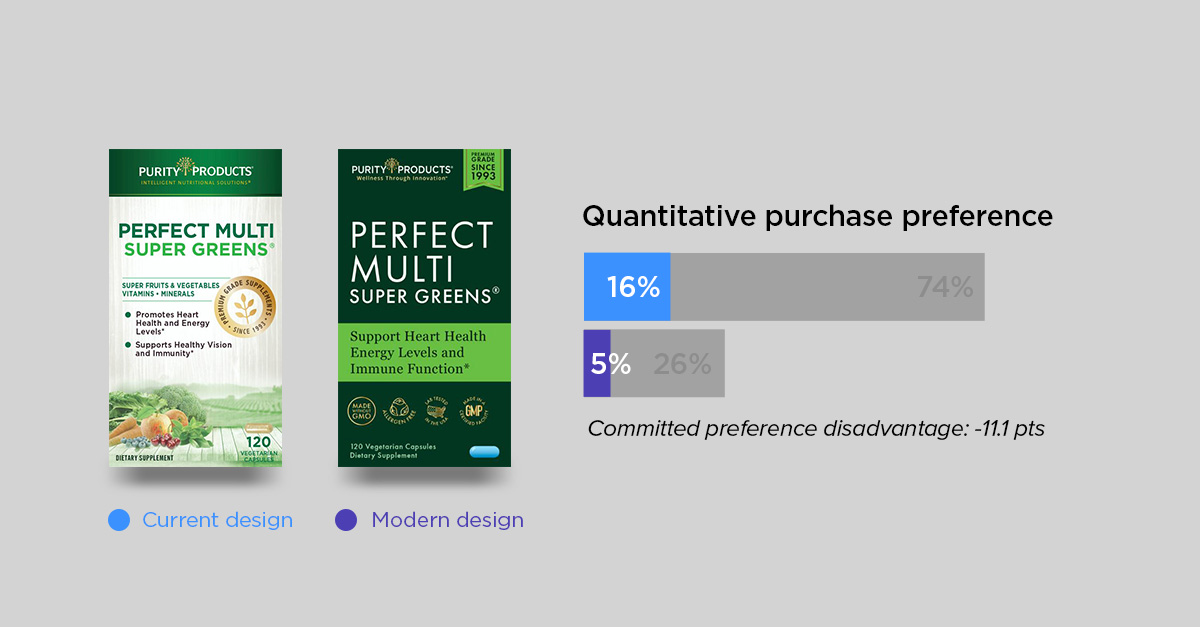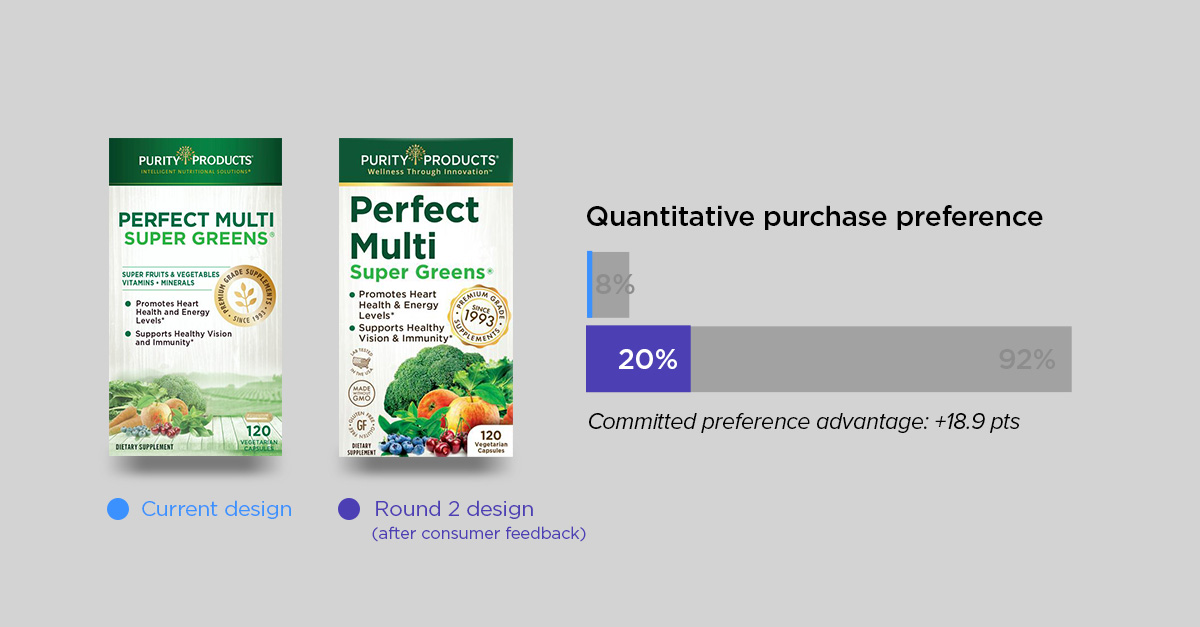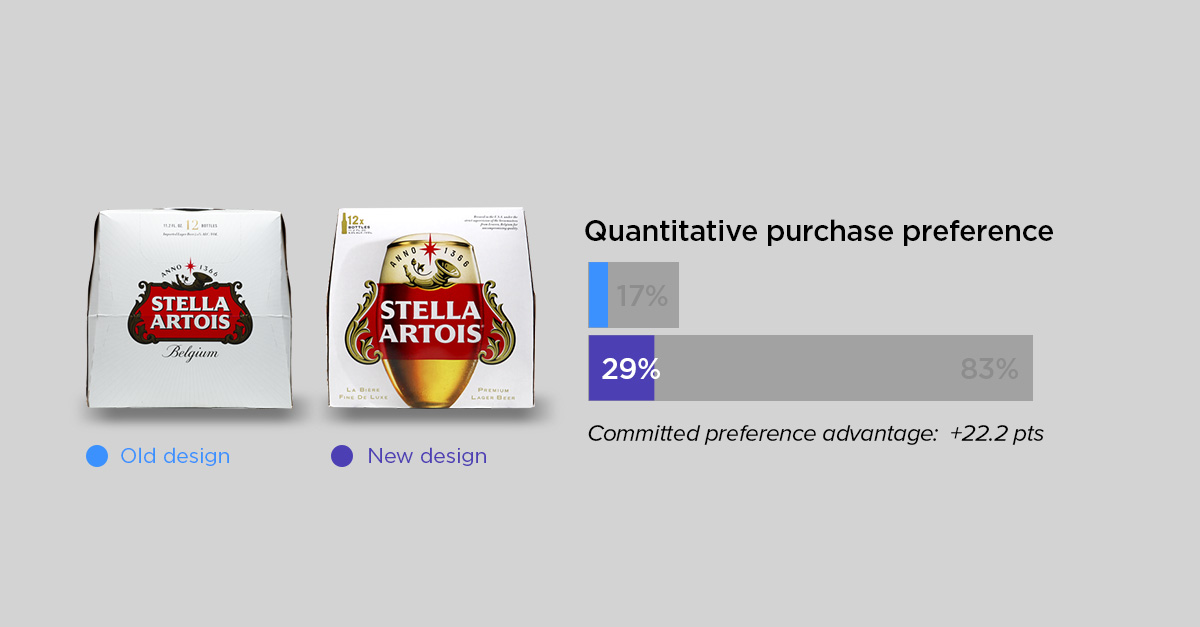More and more, brands are embarking on redesigns with an eye towards “modernizing” their packaging. The instinct is a valid one; after all, no brand wants to look like it is stuck in the past. It’s natural to want your package design to keep pace with the times.
The problem is that modernizing for its own sake almost never works.
At Designalytics, we’ve gathered and analyzed a lot of data on package design. This has provided us with some perspective on what generally works—and what doesn’t—when it comes to driving growth with design. And one thing we’ve found is that “modern” is not a design direction brands should pursue (at least for its own sake) if the goal is to drive growth. Here are some reasons why:
Consumers generally don’t care whether a design is modern
As part of our unique, empirically validated approach, Designalytics conducts research to understand which attributes are most important to consumers when making purchase decisions in a given category. (Research is conducted with a few hundred consumers for every category we assess.) This allows us to not only objectively determine the top purchase-driving attributes, but rank them in order of importance to consumers.
To provide context for this information, we have created an attribute-importance index. A score of 100 in this index is average; scoring above 100 indicates a higher level of importance to consumers, and a number below this threshold indicates it is of below-average importance. Here are some examples from our database: The most important driver across food and beverage categories is “tastes great,” which has an average score of 262. In the personal care space, “effective” is a top driver, with a score of 249.
The average score for “modern” across the 150+ CPG categories we’ve evaluated? It’s 20. That means it is only one-fifth as important as the average attribute in any given category. In other words, consumers are indifferent (at best) about the importance of modernity in designs.
“Modern” can be in the eye of the beholder
Even if some consumers might prefer a more modern-looking design, such a designation remains a nebulous target. If a brand is shooting for a contemporary look, it may hit the mark with some consumers… but the change may be perceived as the opposite by others.
Consider the recent redesign of a popular household cleaning product we tested. The new design is a pared down version of the old, with fewer colors, claims and call-outs—an approach in keeping with the minimalism trend that goes hand-in-hand with conventional wisdom on modernizing package designs.
When we tested this new design against its predecessor, some (but not many) consumers did, in fact, note that it looked more modern to them. But just as many said that the old design looked more modern. And in the end, the previous design far outpaced the new in consumer purchase preference.
Here’s an example of a brand veering away from modernizing during early design exploration. Nutritional-supplement company Purity Products had planned a redesign that would keep pace with others in their category. In Versus testing, the “modern” design concepts the brand developed all failed compared to the current design.
Heeding consumer feedback from those tests, Purity decided to test more “maximalist” concepts, with bright, colorful images of vegetables and larger fonts. Every one of these concepts outperformed the current design by impressive margins. Modernity was rarely mentioned by consumers, but when it was, it was more often mentioned for these new, bolder concepts.


To most brands, modern means minimalist—that is rarely a good thing.
As stated above, minimalism is a popular design trend that brands tend to use as a stand-in for modernity. The problem is that it often impedes communication of attributes that are important to consumers, and we’ve found that such communication has an 88% correlation to directional in-market outcomes. To put it another way: Winning designs communicate very effectively, and minimalist designs rarely do. Overall, only 8% of minimalist redesigns in our cross-category database outperform their more maximalist counterparts.
In the household cleaner example above, many consumers stated that the minimalist redesign made the product look “generic” and “like a store brand,” while the old version looked “more attractive” and “eye-catching” and provided more information. “This version has more info on the package,” said one consumer of the previous design. “So it makes it an easier decision to buy it.”
At the other end of the spectrum, some brands have eschewed the minimalist look to great success, such as Stella Artois. Its previous packaging was spartan—seemingly an attempt at a sleek modernization of a classic brand. The brand went bigger and bolder with its updated design, as well as cleverly incorporating a previously under-utilized brand asset—its signature, tulip-shaped chalice—to showcase the beer and help dramatically improve taste appeal. The results were overwhelmingly positive: The new design outperformed the previous version in consumer purchase preference, 83% vs. 17%.

A “modern” redesign isn’t a worthwhile goal
Often, the drive to embark on a modernization of a brand’s design comes from looking at competitors. Brand managers may see an updated package from a rival and fear they’ll look antiquated on the shelf alongside it. The redesign is essentially an attempt to “keep up.”
Savvy brands, on the other hand, get a baseline read of their current design to better understand whether a redesign is even warranted. They also keep tabs on the performance of competitors’ redesigns in order to see whether it’s worthwhile to “keep up” in the first place and, if so, how. (Learn more about syndicated design performance data, which can help you do this quickly and affordably.)
If a package does require a fresh look, the goal should be to increase the design’s performance—likely by improving upon one or more of these key metrics of design success. Any concerns about whether a design is outdated can be assessed through consumer testing during the creative process, and necessary adjustments can be made by the experts at your design agency.
So go ahead and allow your competitors to “modernize,” while you keep an eye on the real prize: A redesign that actually improves your brand’s bottom line.




